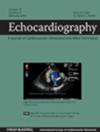Predicting the Need for Pulmonary Venous Reintervention in Total Anomalous Pulmonary Venous Connection: The Role of Preoperative Echocardiographic Metrics
Abstract
Purpose
Development of postoperative obstruction in total anomalous pulmonary venous connection (TAPVC) is a major cause of morbidity and mortality. Although preoperative echocardiography has often been cited as prognostic of postoperative outcome, its predictive value has not been fully evaluated. Pulmonary venous variability index (PVVI) is an echocardiographic metric developed at our center and previously shown to correlate with preoperative clinical markers and catheterization findings of obstruction. We hypothesized that preoperative PVVI would be superior to maximum and mean velocity for prediction of postsurgical outcome in TAPVC.
Methods
We performed a retrospective review of TAPVC patients repaired at our center. Preoperative echocardiograms were reviewed for clinical read, and measures of pulmonary venous obstruction including maximum, mean, and minimum velocity and PVVI ([maximum velocity−minimum velocity]/mean velocity) were calculated from spectral Doppler of the pulmonary venous pathway. The outcome was time to surgical or catheter-based pulmonary vein reintervention.
Results
In total, 162 patients were included and 33 (20%) underwent reintervention. On univariate Cox proportional hazards model, single ventricle status, mixed-type TAPVC, and PVVI ≤ 0.5 were predictive of reintervention (hazard ratios of 2.7, p = 0.01; 3.2, p = 0.01; and 2.2, p = 0.03, respectively). Absolute echocardiographic velocities were not associated with the outcome. On multivariate analysis, single ventricle status and mixed-type TAPVC remained significant predictors of reintervention, while PVVI did not.
Conclusions
Though preoperative PVVI was associated with an increased risk of postoperative reintervention in TAPVC by univariate analysis, multivariate analysis suggests that single ventricle status and TAPVC subtype are the strongest drivers of postoperative outcomes. Preoperative velocities are not predictive of outcome in TAPVC.


 求助内容:
求助内容: 应助结果提醒方式:
应助结果提醒方式:


